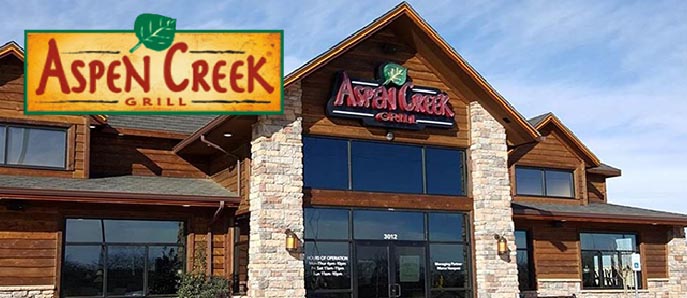A nice glass of wine with a delicious meal is the definition of a perfect evening for many wine lovers. However, for newcomers, knowing what to order and how to pair it with food can be daunting. As summer draws to a close, this is the perfect time to refresh wine knowledge. Ashley Kientzle, beverage director for Ray’s Restaurants, offers the following lessons to help guests graduate from wine novice to connoisseur.
Lesson 1. Develop Your Own Palate
As with any new subject, developing your palate takes practice and patience. The key to enjoying wine is to relax and remember people have different tastes. “There’s no right or wrong way to pair wine,” says Kientzle. “One person might find a wine sweet, while another may not.” Take notes on the aromas, flavors and textures you experience and compare similar wines to identify subtle differences. “When a server suggests a buttery chardonnay, try it. Let it sit in your mouth and see if you notice the creaminess. Or, if you’re trying cabernets, see if you detect hints of oak or coffee. Training your palate takes time, so experiment and explore to refine your taste.”
A good way to explore different “lessons” in wines is to order by the glass. “This allows you to try different options in one meal,” she advises. “If you want to expand your palate, this is a great option.” Many wine enthusiasts say ordering bottles gives more bang for the buck, but the advantage of wine by the glass is the ability to taste the wine before committing to a full bottle.
Lesson 2. Let the Wine Accentuate the Flavor of the Food
Pairing wine with food is like matching subjects to study habits—it enhances the appreciation of how flavors interact. Kientzle explains, “Pairing expands your palate. People often think smoky food and smoky wine will cancel each other out, but they actually enhance each other.” She mentions seafood as a prime example: “A wine’s salinity can make it perfect with ceviche or oysters and bring out the flavor. That’s the joy of pairing food and wine; it adds to the excitement of the dining experience.”
Kientzle also suggests varying wines throughout a meal. “Start with a white wine for an appetizer, then switch to a red for steak or lamb.” She encourages experimenting at home, too, even with snack foods. “Try a buttery Sonoma chardonnay with movie-style popcorn or a light pinot noir with caramel or chocolate popcorn. Barbecue chips pair well with a nice malbec or Australian cabernet, and ranch dip is great with a crisp New Zealand sauvignon blanc.”
Lesson 3. More Expensive or Older Isn’t Necessarily Better
Just as the most expensive school supplies aren’t always necessary for success, the price of a bottle of wine doesn’t always reflect its quality or taste. Some expensive wines may be crafted with rare grapes or aged in specific barrels, but that doesn’t guarantee a superior experience. Moreover, wine enjoyment is deeply personal—what matters most is your palate. Many affordable wines offer exceptional flavor profiles that rival or surpass their pricier counterparts.
Kientzle says the team at Ray’s can offer great guidance. “Discuss your price range with your server, and they can direct you to some favorites. They know the wines that have great value and have tasted most of them so they can steer you in the right direction. Our servers won’t try to sell you something just because it’s at a certain price point. We want to enhance your experience. We have a wonderful wine list and a great staff to make that happen.”
Additionally, most wines are produced for immediate enjoyment and don’t need to be stored or aged. Kientzle says, “If there’s something you know you want to celebrate in a few years, you might opt for something to save for that occasion but do your research on the wine you’re buying. Generally, most wines—at home or in the restaurant—are ready to be enjoyed right off the shelf.”
Lesson 4. Learn About Wines for Different Regions
Learning about wines from different regions is like studying geography—each region has its own climate and terrain that influence the final product. California wines, particularly those from Napa Valley, are known for their bold fruit-forward profiles, thanks to the region’s sunny weather and diverse terroir. Kientzle says this makes them an ideal starting point. “There’s a lot of fruit in those wines, and California pinot noirs are great for beginners. They have complexity but are still approachable for entry-level drinkers.”
From there, Kientzle suggests branching out to wines from Burgundy and trying red blends or maybe a Côtes du Rhône with grenache. Other possibilities include wines from Bordeaux, where the temperate climate and gravelly soils produce robust and tannic wines, with a rich blend of cabernet sauvignon and merlot. In contrast, Italian wines from Tuscany, such as Chianti, are often more acidic with flavors of cherry and herbs, influenced by the region’s warm climate and limestone-rich soils. Each region’s unique conditions impart a distinct flavor and structure.
Asked what regions are currently interesting, Kientzle highlights France’s Loire Valley. “I’m loving chenin blancs right now. There are young chenin blancs for the sauvignon blanc drinkers that are amazing. Some have been aged on oak and can be great for chardonnay drinkers. If you know you like chardonnays or cabernets, talk to your servers. Our folks are very knowledgeable and can give options beyond California or France.”
Lesson 5. Just Have Fun with It!
Remember that learning about wine should be fun. This is perhaps the most important lesson of all. Savoring wine is more than simply drinking—it’s a journey that captivates all the senses. The intricate aromas draw you in, capturing the essence of the grapes, while each sip offers delicate nuances and bold flavors that dance on your palate. Whether you’re enjoying a quiet evening at home or sharing a bottle with friends, wine creates an atmosphere of relaxation and connection. It’s this combination of sensory delight, social bonding and the thrill of discovery that makes wines so delightful.
Kientzle also emphasizes the importance of not feeling overwhelmed. “Wine can seem intimidating, but it’s meant to be fun, exciting and enjoyable.” She adds, “Take notes and photos of your favorite wines and explore. At the end of the day, it is about having fun and enjoying the experience. Cheers!”
About Ray’s Restaurants:
Founded in 1984 by renowned restaurant industry veteran Ray Schoenbaum, Ray’s Restaurants is comprised of Ray’s on the River (6700 Powers Ferry Road in Sandy Springs, 770-955-1187), Ray’s in the City (240 Peachtree Street NW in Downtown Atlanta, 404-524-9224) and Ray’s at Killer Creek (1700 Mansell Road in Alpharetta, 770-649-0064). Each restaurant features an award-winning menu with an emphasis on fresh fish flown in daily from the Atlantic and Pacific, house-cut chops, prime steaks and extensive wine offerings from around the world. www.raysrestaurants.com.








